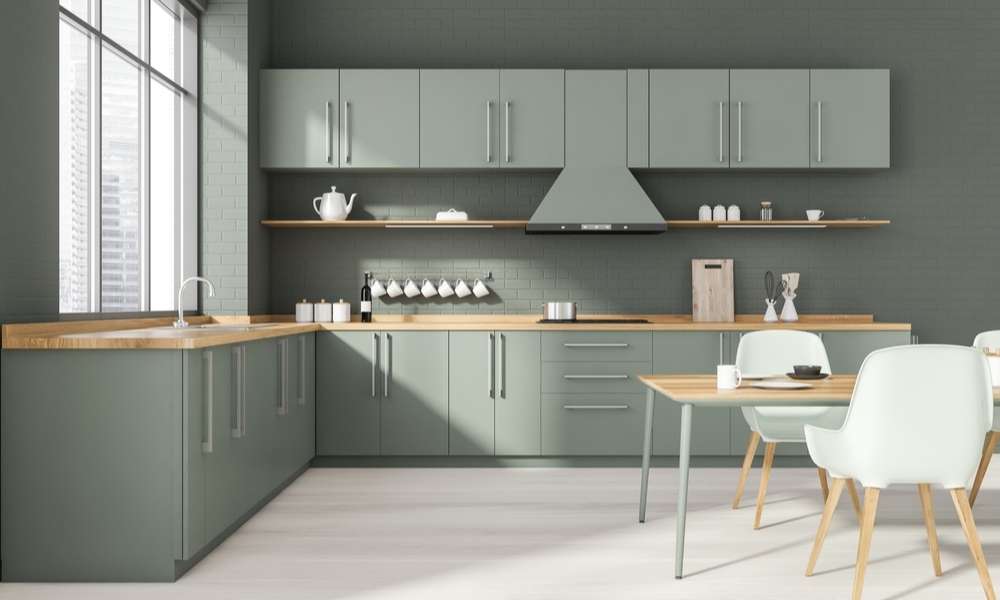Revamping your sleeping haven doesn’t have to break the bank or consume your weekends. Learning how to paint bedroom furniture can transform your space, adding a personal touch and fresh vibe to your sanctuary. Whether you’re looking to inject some personality or update tired pieces, painting bedroom furniture offers a cost-effective and rewarding way to achieve your vision. This guide will walk you through the benefits of this DIY project, highlight what’s important to consider, and assure you that, yes, you can do this yourself! Dive into the world of color and creativity, and let’s give your bedroom furniture a fabulous facelift.
How Many Coats Of Paint Should I Apply?
The number of coats of paint you should apply depends on several factors, including the type of acrylic, the color you’re painting over, and the desired finish. In general, most painting projects require at least two coats of acrylic for full coverage and a professional-looking finish. However, some situations may require additional coats for better durability or to achieve a specific look.
Should I Seal The Painted Furniture With A Top Coat?
Yes, it is recommended to seal painted furniture with a top coat to protect the paint and ensure its longevity. A top coat can provide added durability, resistance to scratches and stains, and make the furniture easier to clean. It also helps enhance the overall appearance of the painted surface by giving it a smooth and polished finish.
Distressing for a Vintage Look
Distressing for a vintage look is a popular technique that can add character and charm to your bedroom furniture. To achieve this aesthetic, start by sanding the edges and corners of your pieces to mimic natural wear and tear. Consider using various tools like sandpaper, chains, or even a hammer to create different textures and distressing effects.
Awareness of Paint Fumes
An often-overlooked aspect of the project to paint bedroom furniture is the potential health impact of paint fumes. It’s crucial to work in a well-ventilated area to minimize inhalation of these fumes, which can contain volatile organic compounds (VOCs) harmful over long exposures. Opening windows, using fans to circulate air, and wearing protective masks can significantly reduce health risks. Moreover, selecting paints labeled low-VOC or VOC-free can make your painting project safer for you and the environment. Awareness of acrylic fumes is not just about safety; it’s about ensuring the sustainability and comfort of your living space.
Stenciling for Creative Designs
Stenciling is a fantastic way to infuse your painted bedroom furniture with personality and sophistication. This technique allows you to apply intricate patterns, motifs, or even text, adding a layer of design that can transform a plain piece into a statement item. Begin by choosing a stencil that complements your room’s decor. Secure it in place, and use a small brush or sponge to apply the paint, taking care to avoid bleed-under for crisp lines. You can opt for a contrasting color for baldness or a subtle tone-on-tone effect for a more understated elegance. Stenciling not only enhances the beauty of your furniture but also offers a creative outlet to express your style and artistry.
Painting Techniques
Painting your bedroom furniture can significantly impact the finish and durability of your pieces. Whether you prefer brushing, rolling, or spraying, each method has its benefits and best practices. Here’s how to paint bedroom furniture using these different techniques, ensuring a makeover that not only transforms but lasts.
1. Brushing
Brushing is perhaps the most traditional method of applying paint to bedroom furniture. It allows for a high level of control and is excellent for getting into nooks and crannies. When using a brush, opt for high-quality synthetic bristles that won’t leave stray marks on your surfaces. Apply acrylic in thin, even coats, ensuring you don’t overload the brush to avoid drips and uneven coverage. Brushing is ideal for detailed work and can give you a hand-painted, artisanal feel, which is often sought after in bedroom furniture makeovers.
2. Rolling
Rolling is another effective technique for how to paint bedroom furniture, especially for larger flat surfaces like wardrobe doors or bed frames. A roller can cover more area faster than a brush, providing a smooth, even coat. Use a small foam roller for a fine finish; they are particularly adept at avoiding the stipple effect that larger rollers might create. While rolling doesn’t get into crevices like a brush can, it’s an excellent choice for creating a clean, contemporary look on the main surfaces.
3. Spraying
Spraying is a modern and efficient technique for painting bedroom furniture, offering a professional-looking finish. It’s particularly useful for complex pieces with intricate details and hard-to-reach areas. Spraying provides a uniform, smooth coat without brush marks or roller edges. However, it requires a well-ventilated space and appropriate safety gear, such as masks and goggles. When you choose to spray acrylic your bedroom furniture, practice on a scrap piece first to get comfortable with the technique and ensure you’re applying the paint evenly.
Benefits Of Priming The Furniture
Priming is a critical step in the furniture painting process, laying the groundwork for a flawless finish. This preparatory coat improves paint adhesion, ensuring your color coats go on smoother and stick better, reducing the likelihood of peeling or chipping. Primers also help to block stains and wood tannins from bleeding through, especially important for pieces with a history or those constructed from porous woods. While it might be tempting to skip this step, taking the time to apply primer can extend the life of your paint job, saving you time and effort in the long run. Additionally, primer can improve paint coverage, potentially reducing the number of color coats needed, making it a cost-effective practice as well.
Setting Up A Ventilated Area
An important aspect of setting up a well-ventilated area is controlling dust particles in the environment. Dust can affect the quality of the paint job and lead to imperfections on the furniture surface. To avoid this issue, invest in a good quality air filtration system or work in an area with minimal dust accumulation. By taking these precautions and creating an ideal ventilated space for painting bedroom furniture, you can ensure a safe and productive working environment while achieving professional results that will last for years to come.
Achieving Smooth Finishes
Achieving smooth finishes is paramount in learning how to paint bedroom furniture. The secret lies in meticulous preparation and the right technique. Start with sanding the furniture to create a smooth base. This removes imperfections and ensures the paint adheres properly. After priming, apply thin layers of acrylic, letting each layer dry thoroughly before applying the next. Use fine-grit sandpaper between coats for an ultra-smooth finish. Opt for high-quality brushes or rollers to avoid brush marks. If you’re seeking perfection, consider using a paint sprayer, which can provide a flawless finish unmatched by traditional methods. Patience is your ally here; never rush the drying process, as this foundation is crucial for a professional-looking outcome.
Curing The Paint For Durability
To ensure the durability of painted bedroom furniture, curing the paint is a crucial step. Once the paint has been applied and allowed to dry, proper curing involves giving it sufficient time to harden and form a strong bond with the surface. This process typically takes a few days, but following specific manufacturer instructions for curing times is recommended for optimal results.
Checking For Any Loose Components
Loose components not only affect the aesthetics of your furniture but also impact its functionality and durability. By addressing these issues beforehand, you can prevent future problems such as squeaky drawers or unstable shelves. Regular maintenance of your furniture will not only extend its lifespan but also contribute to a more polished and professional-looking paint job.
Troubleshooting Common Issues
Painting bedroom furniture can sometimes come with its fair share of challenges, but knowing how to troubleshoot common issues can help you overcome them with ease. Here are some tips for fixing drips, addressing chips, and employing touch-up strategies to achieve professional-looking results.
1. Fixing Drips
Drips and runs in the paint can occur if you apply too much paint or if the paint is too thin. To fix drips, wait for the paint to dry completely, then sand the affected area gently with fine-grit sandpaper. Once smooth, wipe away any dust with a clean cloth and apply a thin layer of paint using a brush or roller. Be sure to feather the edges to blend the new paint seamlessly with the surrounding area. Allow the paint to dry thoroughly before inspecting for any remaining imperfections.
2. Addressing Chips
Chips in the paint can be unsightly and compromise the overall appearance of your furniture. To address chips, start by gently sanding the damaged area to remove any loose paint and smooth out rough edges. Clean the surface with a damp cloth to remove any dust or debris. Next, apply a small amount of wood filler to the chip, using a putty knife to smooth it out evenly. Once the filler has dried completely, sand the area again to create a smooth surface. Finally, touch up the area with matching paint, blending it carefully with the surrounding area for a seamless finish.
3. Touch-Up Strategie
Touching up areas where the paint has chipped or worn away is an essential part of maintaining the appearance of your painted bedroom furniture. To touch up small areas, start by lightly sanding the affected area to create a smooth surface for the new paint to adhere to. Once sanded, apply a small amount of touch-up paint using a fine brush, blending it carefully with the surrounding area to achieve a seamless finish. Allow the paint to dry completely before assessing the results and applying additional coats if necessary. By employing these touch-up strategies, you’ll be able to keep your painted furniture looking fresh and flawless for years to come.
The Final Thought
Painting bedroom furniture can be a rewarding and cost-effective way to update your living space. By following the steps outlined in this article, you can achieve a professional and polished look that complements your décor. Remember to properly prepare the furniture surfaces, choose high-quality paint and supplies, and take your time to ensure even coverage. With patience and attention to detail, you can transform your furniture into stylish pieces that enhance the overall ambiance of your bedroom. So, why wait? Start your furniture painting project today and enjoy the beautiful results for years to come.





